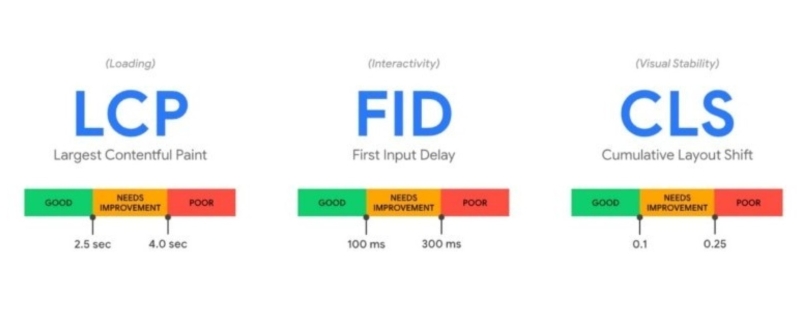
The only thing that stays the same in SEO is how fast it changes. Google core updates are no longer just algorithm changes anymore. These updates now rewires how it thinks, how it understands content, and how it delivers results.
Your last winning strategy might already be outdated. AI is rewriting how queries are interpreted. User behavior is shifting faster than most sites can keep up.
And the gap between good SEO and bad SEO? It’s getting wider.
This doesn’t mean you need to overhaul everything every few months. But if you’re still treating SEO like a checklist from 2018, you’re going to get left behind.
Whether you run your own site or manage it for clients, here are the major trends in SEO worth watching in 2025 and what you can actually do to stay visible.
1. Voice search keeps getting smarter

People aren’t just typing search queries. They’re talking to phones, smart speakers, and car dashboards. And their questions sound more like conversations than search strings.
Think:
“Where can I get good sushi around here?”
“How late is Target open tonight?”
“How do you get coffee stains out of carpet?”
Search engines are listening, and they’re better at figuring out what people mean, not just what they say.
How to optimize for voice search:
Use natural phrasing in your copy. Write how people talk.
Add an FAQ section with clear, direct answers.
Target long-tail keywords that match how someone might ask a question.
Use schema markup to make those answers easier for Google to find.
Most voice searches are local, question-based, and mobile. If your site isn’t ready for that, it’s worth rethinking how you’re structuring your content.
2. AI and machine learning are reshaping search

Google doesn’t just match keywords anymore. It uses AI to figure out what people are really looking for, and if your page doesn’t meet that intent, it won’t rank, no matter how well optimized your headline is.
If your SEO strategy is still stuck on plugging keywords into static blog posts, you’re going to fall behind.
What that means for you:
Match search intent – figure out what users actually want when they type (or speak) a query.
Structure your content with clear headings, summaries, and helpful links.
Use internal linking to create a connected experience for both readers and crawlers.
Avoid fluff and keyword stuffing – Google’s better than ever at recognizing low-value content.
Example: If someone searches “how to fix a slow draining sink,” don’t write 800 words about plumbing history. Get to the solution. Add a step-by-step breakdown. Link to a related guide or video.
3. Mobile-first is the only index that matters

Mobile-first indexing isn’t new, but it still catches people off guard. Google looks at your mobile site first. If that version is slow, clunky, or broken, your rankings take a hit.
Mobile tips to clean up today:
Use a responsive layout that adjusts to any screen
Compress your images. You don’t need 4K hero banners on a phone
Make buttons big enough to tap with your thumb
Get rid of those pop-ups (please)
Run your site through PageSpeed Insights, but focus on the mobile tab. That’s what matters most now.
4. Core Web Vitals still matter (and likely always will)

Core Web Vitals are Google’s way of measuring real-world site performance. These metrics tell Google whether your page loads quickly, behaves smoothly, and doesn’t annoy the user.
The big three:
LCP (Largest Contentful Paint): How fast your main content loads (aim for <2.5s)
FID (First Input Delay): How quickly your site responds to clicks and interactions
CLS (Cumulative Layout Shift): How stable your layout is during load
How to improve them:
Compress your images, preload fonts, and clean up bloated code.
Minimize JavaScript and avoid clunky third-party scripts.
Set fixed dimensions for embedded videos, ads, and images.
Use tools like PageSpeed Insights, Lighthouse (Chrome extension), or Semrush Site Audit to keep tabs on your vitals.
5. Video content is no longer a “bonus”

Video is front and center in 2025.
It shows up in Google results, it boosts time on page, and it helps explain things better and builds trust faster.
If you’re not using video yet, you’re leaving reach (and rankings) on the table.
How to make it work:
Use keyword-rich titles and descriptions on platforms like YouTube.
Add closed captions and transcripts. They’re good for accessibility and SEO.
Embed relevant videos directly into your content (not buried on a separate video page).
Use VideoObject schema to help Google understand your video content.
Short videos work especially well for product demos, quick tutorials, and FAQ answers.
6. E-E-A-T is still a big deal

Google’s looking for Experience, Expertise, Authoritativeness, and Trustworthiness—especially when content impacts people’s money, health, or safety (YMYL topics).
And it’s not just about having good writing. It’s about showing that a real person with real experience is behind the content.
How to show E-E-A-T:
Use author bios that list credentials or relevant experience.
Link to trusted sources to back up your claims.
Keep content up to date. Don’t let your how-to guides rot.
Get featured on other trustworthy sites, blogs, or industry platforms (backlinks help build authority).
If your blog looks anonymous or autogenerated, that’s a problem. Show your face, show your knowledge, and build content that’s genuinely helpful.
7. Local SEO & Google Business Profiles are still vital

Local SEO hasn’t gone anywhere. If anything, it’s become more important, especially for service-based businesses and anyone with a physical location.
Your Google Business Profile is one of the strongest local ranking signals you control. If it’s half-filled, outdated, or inactive, you’re giving away visibility.
What to do:
Fully build out your GBP. This includes photos, hours, services, FAQs, etc.
Post regular updates (think weekly, even if simple).
Respond to reviews (yes, all of them)
Use location-based keywords on your site naturally (not just on your GBP).
Keep your NAP (Name, Address, Phone) consistent across every listing, social profile, and citation.
Tools like Semrush Local or BrightLocal can help you stay on top of listings and reviews at scale.
8. Privacy, first-party data & user trust

With third-party cookies fading out and privacy regulations like GDPR and CCPA tightening, Google and other platforms are prioritizing trust and transparency. That means your website has to play by the rules and give users clarity.
What to focus on:
Use HTTPS: non-secure sites lose ranking power and user trust.
Add a privacy policy, cookie notice, and make it easy for users to manage preferences.
Invest in first-party data like email lists, loyalty programs, and on-site tracking via GA4.
Avoid sketchy tracking scripts or pop-ups that make your site feel shady.
Privacy isn’t just a compliance issue, it’s a ranking and reputation issue too.
Final thoughts
SEO in 2025 isn’t about chasing the algorithm. It’s about creating content that people actually want to find, making it fast and easy to use, and showing Google that you’re legit.
The formula looks something like this:
Clean site + smart content + strong reputation = long-term SEO wins
It doesn’t mean being everywhere. It means being clear, consistent, and trustworthy where it counts.
If you’re doing that, you’re already ahead of most of the competition.
Let’s grow your traffic together
Have an SEO question or need help with a project? Whether you’re a small business or a national brand, I’ll help you rank higher and convert more.
